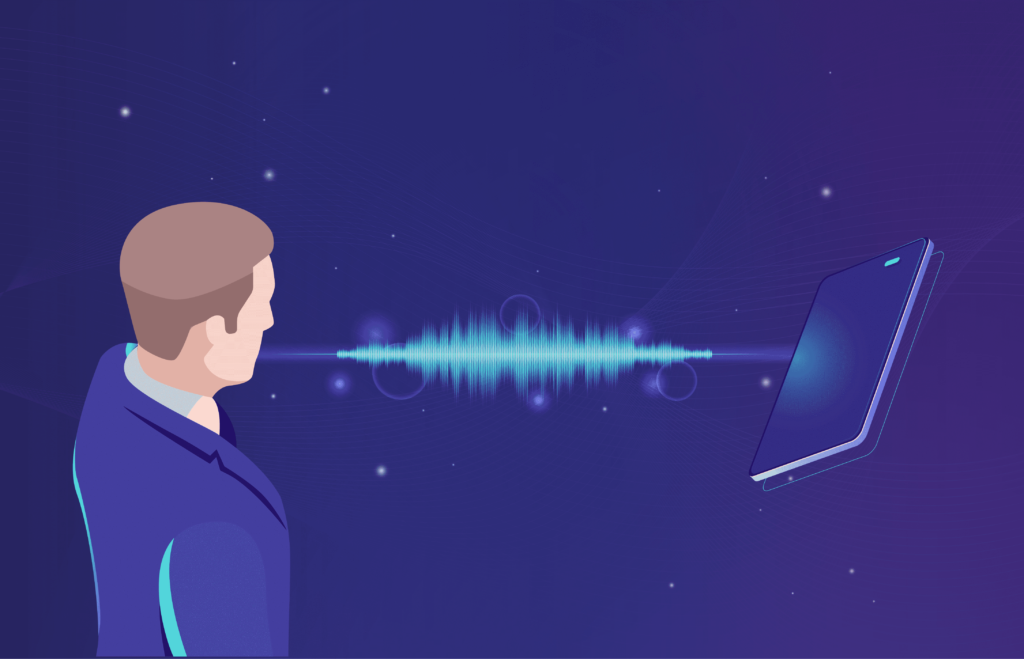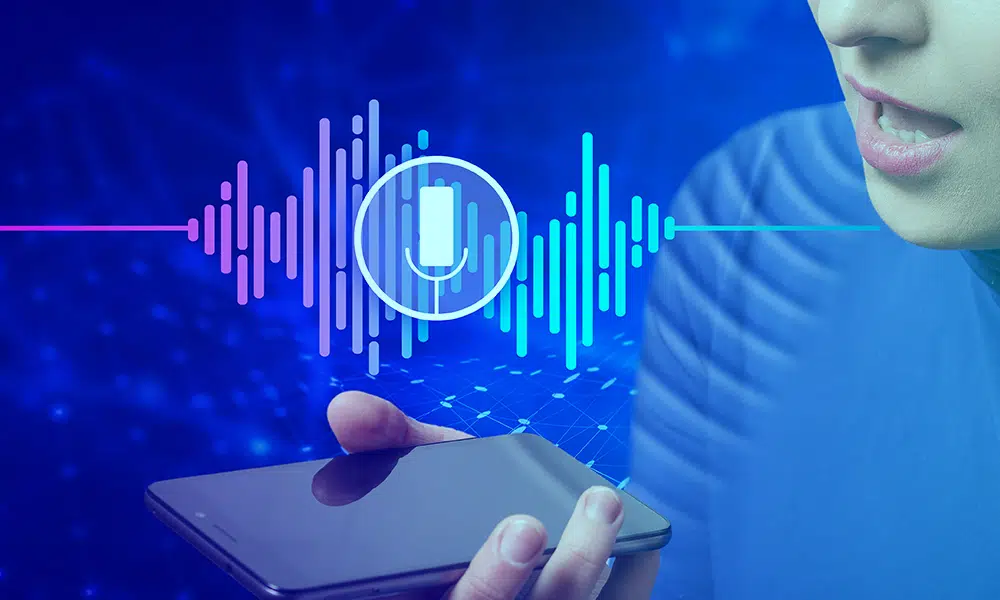In addition to fingerprints, faces, palms, and irises, there are other unique physiological characteristics in humans that are used to identify identity using biometric technology. Voice recognition is one of the safest and most accurate methods of identifying identity. This technology has wide applications and in addition to identity verification, it is also used to access people’s information and bank accounts. Stay with us to learn how biometric voice recognition works and its benefits and applications.
What does biometric voice recognition mean?
Voice is known as one of the biometric characteristics of humans and has a unique frequency and characteristics that artificial intelligence science can easily distinguish from the voices of others. Devices that are equipped with voice recognition technology are able to identify the speaker and determine which person this voice belongs to. Many people believe that voice recognition and speech recognition are the same, when these two methods are completely different and separate from each other.
In voice recognition, patterns such as frequency, tone, accent, speech speed, and tone of voice are analyzed, while in speech recognition, spoken words will be identified. Many years have passed since the use of the voice recognition system; But today it is integrated with biometric technology and used to authenticate people; Therefore, it is used in the preparation of traffic control devices and attendance devices.

Steps of biometric voice recognition
The way biometric voice recognition works is as follows:
1. Audio data collection
Systems equipped with voice recognition technology have a microphone into which a person can speak and their voice is recorded as audio input data.
2. Preprocessing
In order to remove additional noises and normalize the sound, the audio data is cleaned and segmented.
3. Feature extraction
At this stage, the voice is analyzed using the algorithms in the system and its specific features are extracted. Voice features include frequency, tone, speech speed, intensity, and pitch.
4. Create voice profile
According to the features extracted from each person’s voice, a unique voice profile is created, which will be stored in the database.
5. Compliance
Finally, the person stands in front of the device to verify their identity and by speaking into the microphone, their voice is compared with the stored voice profile. If the input voice matches the voice profile, the person’s identity will be verified.
Advantages of biometric voice recognition technology
Using biometric voice recognition technology has several advantages, including the following:
Ease of use
In the new technology, authentication of people is done only by speaking into the microphone, and this method is much simpler than using card devices, fingerprints, and face recognition. In other words, people will no longer face problems such as lost cards or lost fingerprints.
· High speed
The devices that benefit from this technology have very strong sensors for voice recognition and are able to quickly control traffic and identify people’s identities. This feature is very important for organizations that have a large number of personnel.
Being hygienic
This technology does not require physical contact to identify the identity and is considered as one of the best solutions to maintain health, especially in medical centers.
Ease of access
This system is accessible to many people and those who are facing problems such as disability can easily use this device.
High accuracy
Voice features such as tone and frequency are unique to each person and are different from other people’s voice features; Therefore, these characteristics provide high accuracy in identifying people’s identity.
· High security
Voice is one of the unique characteristics of every person and it cannot be faked. For this reason, it is known as the best option for securing the security of military organizations and banks.


Disadvantages of biometric voice recognition technology
In addition to the mentioned advantages, biometric voice recognition also faces challenges, which include the following:
• Voice changes may occur for various reasons such as stress, environmental conditions and illness.
• Voice data can raise privacy concerns and cause problems for users if the system is hacked.
• In crowded and noisy environments, the accuracy of sound recognition decreases; Therefore, in such a situation, it is better to use other biometric technologies.
Applications of biometric voice recognition technology
1. Security and authentication
This technology is used in security systems to manage access to sensitive areas such as server rooms. It is also used to authenticate users in computer systems and after authentication, users will be able to access sensitive systems. Another application of authentication is the use of biometric voice recognition in banking and finance. In this way, people can access their bank accounts and verify their financial transactions.
2. Customer service
Another application of voice recognition technology is identifying the identity of customers when contacting service centers. In this way, customers will be able to benefit from personalized services.
3. Navigation systems
With the use of voice recognition technology, it is possible to safely control cars. In this system, the driver’s voice is recognized by the car and navigation commands or other controls related to the car are implemented.
4. Virtual assistants
The most common use of voice recognition technology is to use it as a virtual assistant. These assistants provide personalized responses based on the user’s voice. In addition, voice recognition technology prevents unauthorized people from accessing these assistants.
5. Health and treatment
Doctors’ access to patients’ medical records through voice recognition technology is one of the most effective applications in the healthcare industry. In addition, doctors and nurses can access certain medications after verifying their identity.
final word
Biometric voice recognition is one of the most advanced technologies for biometric authentication and security in various places. Voice is known as a unique human characteristic and by using artificial intelligence algorithms, it can be used as a biometric identifier to verify the identity of people. This technology is increasingly expanding and people use this method to monitor and control traffic to increase the security of their collections.
RCO NEWS















